

Man overboard is a potentially dangerous situation for a ship at sea. Among the many threats that could undermine the proper course of the voyage of a vessel, accidents related to man falling overboard is one of them. Unfortunately, according to a report, a high percentage of all overboard incidents end in death. It is therefore very important for the ship personnel to act immediately and execute the correct recovery methods so that the life of the person in water is not endangered.
Some of the reasons why seafarers go overboard in the sea are:
In this article, we would discuss the three most common manoeuvres that can be executed to turn a vessel back towards a man overboard in order to rescue the later
The Williamson Turn:
This is the most commonly used manoeuvre onboard ships in the event of a person overboard.
To execute a Williamson turn:
1. Put the rudder hard over towards the side from which the man went overboard, to reduce the chances of the vessel’s propeller striking the MOB
2. After deviation from the original course by 60 degrees, the rudder is put hard over to the opposite side
In the figures, given below, the original course of the ship is 110 degrees. Man overboard is on the starboard side and therefore the turn is to starboard. When the course is 170 (110 + 60) degrees after deviation from the original course which was 110 degrees, rudder is put hard over to port side.
3. When the heading is 20 degrees short of the reciprocal course, the rudder is brought to midship position.
The reciprocal course of 110 degrees is 290 degrees. Reciprocal course can be obtained by simply adding 180 degrees to the original course if original course is less than 180. When the heading shows 310 degrees ( i.e. 20 degrees short of 290 degrees) rudder is put to midship.
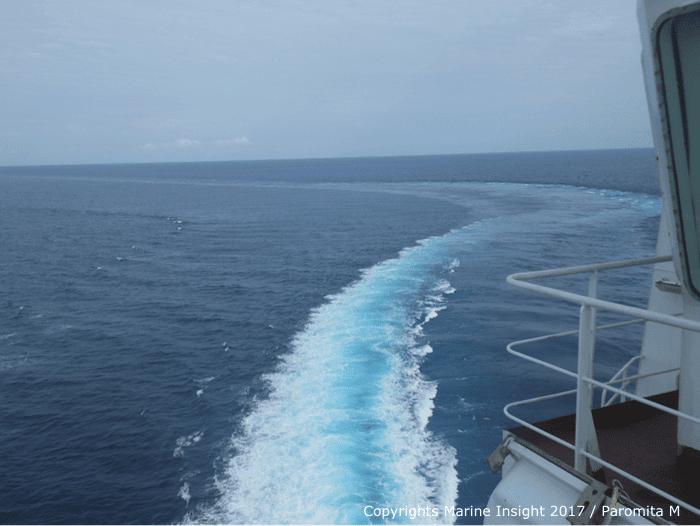

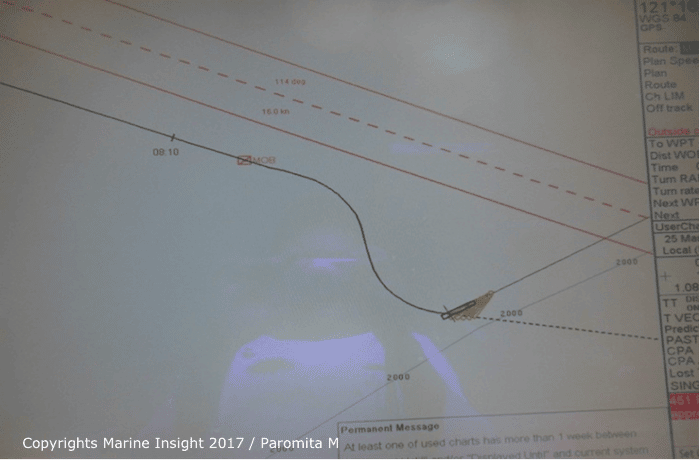

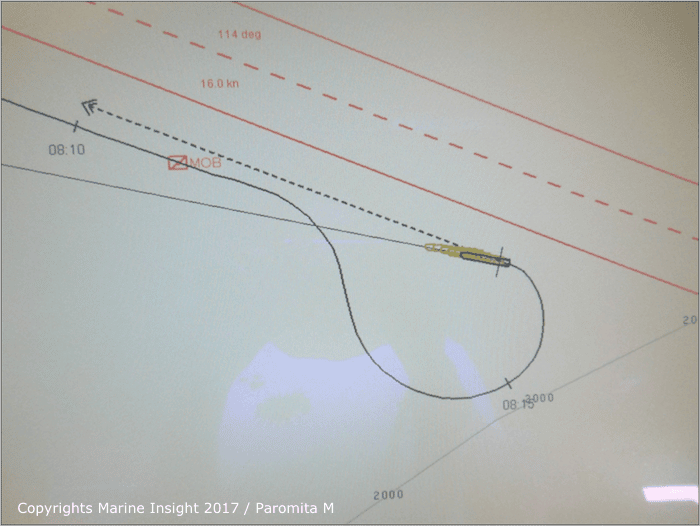

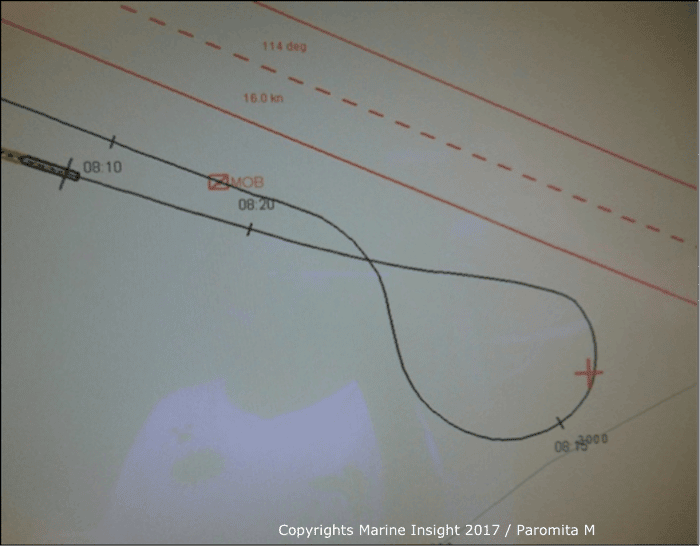

Williamson turn is ideal method in reduced visibility. If executed properly it positions the ship on a reciprocal course on its exact original track thereby allowing the search to commence on the track the victim fell over, not from a parallel track. Speed should be maintained during the turn as any changes in speed may bring the ship on a reciprocal course in a different position than the line of the initial course. However, this turn takes the ship further away from the scene of incident.
Anderson Turn/Single Turn:
This is the fastest recovery method. It is most appropriate turn for ship in clear visibility. In case of this turn, rudder is put hard over to the side of the casualty. After deviation from the original course by 250 degrees, rudder is put to midship position. Revolution needs to be modified at the end of the turn and stopping manoeuvre is initiated.
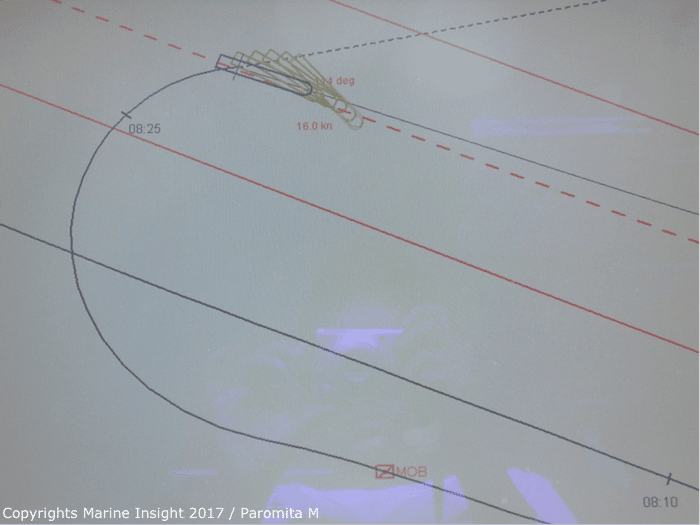

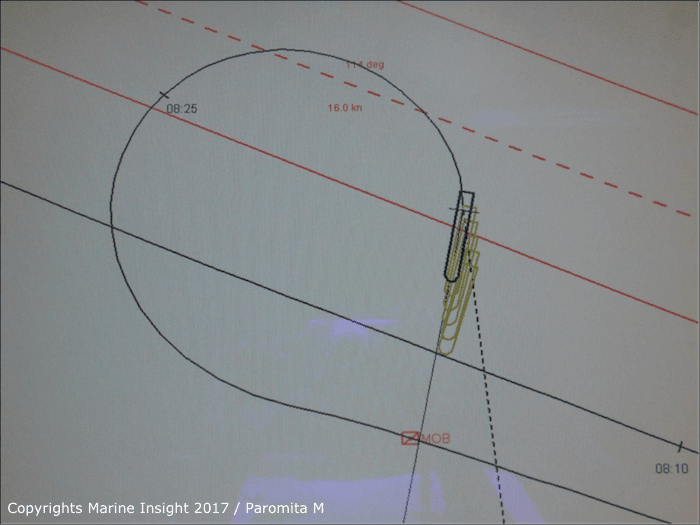

In the above example, the original course of the ship is 290 degrees. Man overboard is on the starboard side. Rudder is put hard to starboard until deviation from the original course is 250 degrees i.e
290 + 250 = 540 degrees (greater than 360)
540 – 360 = 180 degrees
Therefore when the ship’s heading is 180 degrees, wheel is brought to midship.
It can be noted that Williamson turn was commenced at 08:10 local time and completed at 08:21 local time. The turn lasted about 11 minutes. Anderson turn commenced at 08:22 local time and was over by 08:28 local time.
The above manoeuvre demonstrates the superiority of the Anderson turn over the Williamson turn in the immediate rescue operation. This is due to the simplicity of the 270 degrees turn, which translates directly into its duration and also efficiency. Under favourable daylight conditions single turn is the best way to get back to a man overboard in a hurry. This turn is good for ships with tight turning characteristics.
The Scharnov Turn:
The Scharnov turn takes back the ship into her wake. However it cannot be used in an immediate maneuver. This turn cannot be carried out effectively unless the time elapsed between the person falling overboard and the commencement of the maneuver is known.
In the illustrations given below, the original course of the vessel is 180 degrees. The wheel is put hard to starboard to deviate 240 degrees from original course.
180 + 240 = 420 degrees (greater than 360)
420 – 360 = 060 degrees
Therefore when heading is 060 degrees, the rudder is put hard to port. Reciprocal of original course is 000 degrees. When the ship’s heading is 020 degrees, the wheel is put to midship.


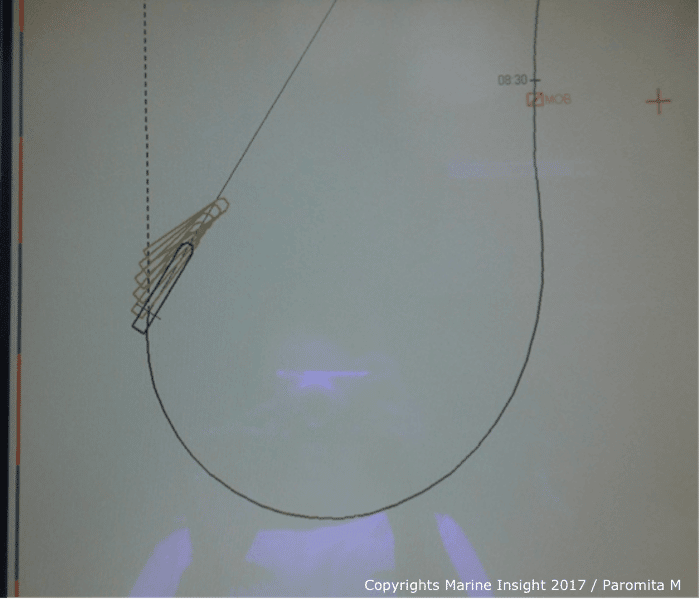

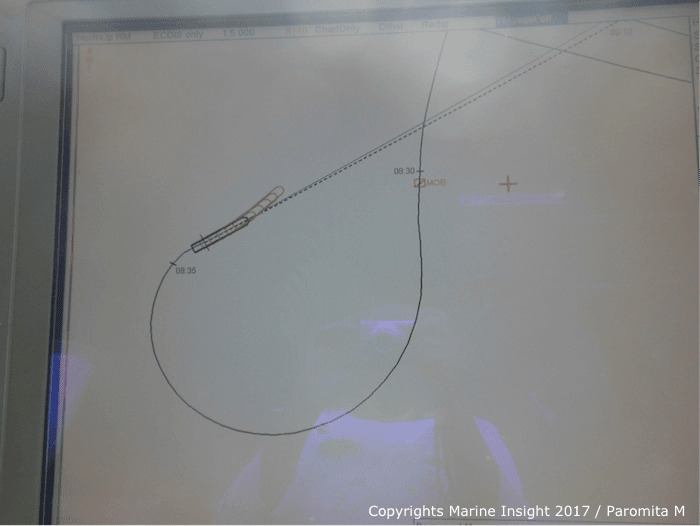

Once ship is brought to reciprocal course, speed should be reduced and preparations should be taken to launch rescue boat. The emergency boat’s crew should standby and be ready to launch the rescue boat. It might not be possible to launch rescue boat during worse sea conditions. In such case alternative recovery methods including the following can be adopted:
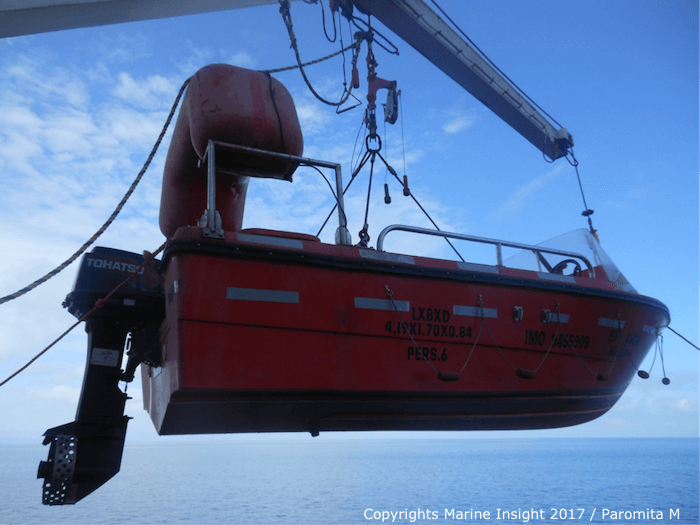

Every vessel must be able to carry out man overboard rescue methods efficiently. When someone falls overboard it is invariably unexpected and under difficult conditions. Even the best swimmers can become disoriented when unexpectedly falling into the water. At such moments there is no time to think. Decisive action is of primary importance when a person falls overboard. One begins to act automatically and these actions are based entirely on the knowledge and training gained previous to the accident. Ship’s crew cannot cope with such a situation unless they are fully prepared for this. It is therefore vital that drills are conducted frequently onboard a vessel.
Minimum safety measures that can be taken onboard ships to avoid man overboard situations:
Disclaimer: The authors’ views expressed in this article do not necessarily reflect the views of The Marine Learners. Data and charts, if used, in the article have been sourced from available information and have not been authenticated by any statutory authority. The author and The Marine Learners do not claim it to be accurate nor accept any responsibility for the same. The views constitute only the opinions and do not constitute any guidelines or recommendation on any course of action to be followed by the reader.
The article or images cannot be reproduced, copied, shared or used in any form without the permission of the author and The Marine Learners.
You may also like to read:










We believe that knowledge is power, and we’re committed to empowering our readers with the information and resources they need to succeed in the merchant navy industry.
Whether you’re looking for advice on career planning, news and analysis, or just want to connect with other aspiring merchant navy applicants, The Marine Learners is the place to be.